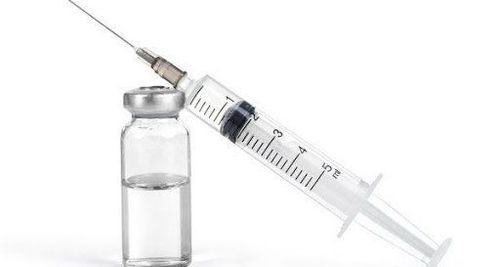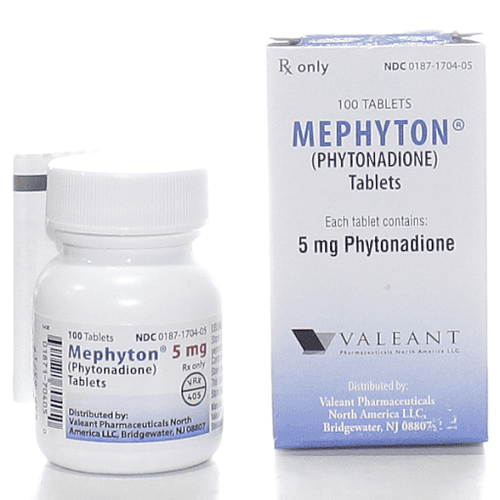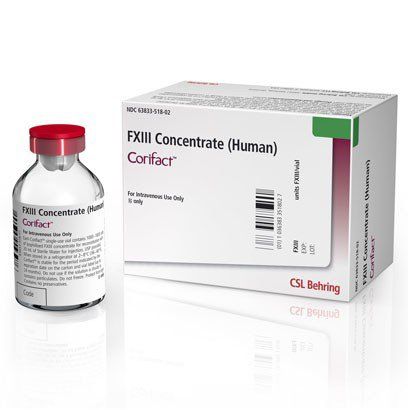This is an automatically translated article.
Wilate Vial contains artificial clotting factors including von Willebrand factor (WWF) and clotting factor VIII. Wilate Vial is indicated to temporarily replace the deficiency of clotting factors and reduce bleeding in patients with inherited blood clotting disorders such as von Willebrand disease, hemophilia A,...
1. What are the uses of Willate Vial?
Wilate Vial contains a complex of von Willebrand factor and clotting factor VIII. This is essential for normal blood clotting. People with low blood levels of factor VIII and von Willebrand factor have a higher risk of bleeding during injury or surgery, especially with a higher risk of bleeding inside the body (usually in the joints and muscle).
Wilate Vial is indicated to temporarily replace the deficiency of clotting factors and reduce bleeding. Wilate Vial has many types with different content of Von Willebrand factor and factor VIII in different products, so patients should not arbitrarily use these products interchangeably. Certain products are used to control and prevent bleeding episodes in people with low blood levels of factor VIII (hemophilia A). Other products are used to treat bleeding in people with low blood levels of Von Willebrand factor (Von Willebrand disease) or as prophylaxis before surgery in Von Willebrand patients.
2. How to use Wilate Vial
Wilate Vial is slowly infused by medical staff into the patient's vein as prescribed by the doctor. The rate of infusion depends on the dose and response of the patient.
Wilate Vial is commonly used in medical centers or hospitals. However, in some special cases, doctors can prescribe Wilate Vial for patients to use at home. Patients and caregivers should carefully read the medication instructions on the product labels, prepare the necessary medical supplies for the injection, and ask the doctor if they have any questions.
If Wilate Vial's medicine and solvents are stored in the refrigerator, leave the medicine out to return to room temperature before mixing. After mixing the solvent into the medicine, gently rotate the vial to dissolve the powder completely, taking care not to shake the vial vigorously. Check the sensory quality of the freshly mixed drug solution, absolutely do not use it if the solution is found to have residue or change color.
The dose of Wilate Vial is prescribed by the doctor based on the patient's medical condition, weight, blood test results and response to treatment. For the drug to work best, patients need to strictly follow the treatment schedule prescribed by the doctor. Immediately notify your doctor if after a period of taking Wilate Vial, your condition does not improve or your symptoms get worse.

Thuốc Wilate Vial được nhân viên y tế truyền chậm vào tĩnh mạch
3. The side effects of the drug Willate Vial
Many people using Wilate Vial do not experience significant side effects. However, patients need to be very careful, because although rare, Wilate Vial medicine can cause dangerous side effects such as:
Flushing, nausea, vomiting, tachycardia may occur while infusion. Willate Vial drug. These symptoms may be reduced by reducing the infusion rate. Symptoms of burning, redness, and irritation may occur at the injection site. Besides, there is fever, chills, tingling sensation in the limbs. Tell your doctor if these side effects are severe or persistent. Tell your doctor right away if any of these serious side effects occur, such as: signs of anemia (fatigue, feeling weak, pale skin, trouble breathing), new or severe bleeding or bruising than. Although very rare, Wilate Vial can cause conditions related to blood clots. Patients should seek medical help immediately if symptoms appear such as: pain, redness, edema, weakness in the limbs, hot to the touch in the painful swollen calf area, coughing up blood, pain in the chest, jaw, left arm, sudden blurred vision, confusion, aphasia, weakness on one side of the body, sudden severe headache, fainting. Willate Vial is made from human blood. Although the manufacturing process goes through many stages of strict control, there is still a very small risk in the drug containing pathogens that have not been eliminated such as the hepatitis virus. Therefore, the patient should tell the doctor if during use there are symptoms of hepatitis or other infection such as fever, persistent sore throat, fatigue, unusual drowsiness, joint pain, vomiting, sadness prolonged vomiting, abdominal pain, stomach pain, yellow skin and eyes, dark urine. After taking the medicine, if a rash, itching, edema (especially in the face, tongue, or pharynx) appear, severe dizziness, difficulty breathing, etc., immediately take the patient to a medical facility because this could be a symptom of a serious allergic reaction to the medication. The above are not all possible side effects. Tell your doctor if you have any of the symptoms not listed above while taking this medicine.

Thuốc Wilate Vial có thể gây tác dụng phụ như mệt mỏi
4. Precautions when taking Wilate Vial
Before using Wilate Vial, tell your doctor or pharmacist if:
Allergy to clotting factor preparations or excipients of the drug. Have a history of or are suffering from other medical conditions. Some other precautions when taking Wilate Vial include:
Monitor heart rate during infusion: if heart rate becomes faster, reduce infusion rate or suspend infusion until heart rate returns normal. Because Willate Vial is made from human blood, a small percentage of patients taking the drug are infected with pathogens that have not been completely eliminated from the drug. To limit this risk, patients need to be vaccinated appropriately (hepatitis A vaccine, hepatitis B vaccine) before using the drug. Ask your doctor for specific advice on this matter. During pregnancy, use Wilate Vial only when absolutely necessary, discuss with your doctor to clearly weigh the benefits and risks that the drug brings. There are not enough data to confirm whether Wilate Vial passes into breast milk or not, consult your doctor before breast-feeding while taking this medicine.
5. Some other notes when using Wilate Vial
Before using Wilate Vial, the patient should inform the doctor of all prescription and non-prescription drugs that are currently being used. This helps doctors anticipate and take action to prevent possible drug interactions.
During treatment with Wilate Vial, patients need regular tests to monitor levels of factor VIII, von Willebrand factor so that doctors can monitor response to the drug and adjust dose accordingly.
Patients need to strictly follow the medication schedule as directed by the doctor. If you forget to take a dose of Wilate Vial, contact your doctor immediately for advice on a new dosing schedule. Do not use a double dose of Willate Vial to make up for a missed dose.
Store Wilate Vial according to the manufacturer's instructions. Wilate Vial medicinal products have different storage methods, so read the instructions on the product label carefully to know how to store it correctly. Do not let the medicine freeze, do not store the medicine in a place with high humidity and direct light. Keep Willate Vial out of the reach of children and pets.
Please dial HOTLINE for more information or register for an appointment HERE. Download MyVinmec app to make appointments faster and to manage your bookings easily.
Reference source: webmd.com













